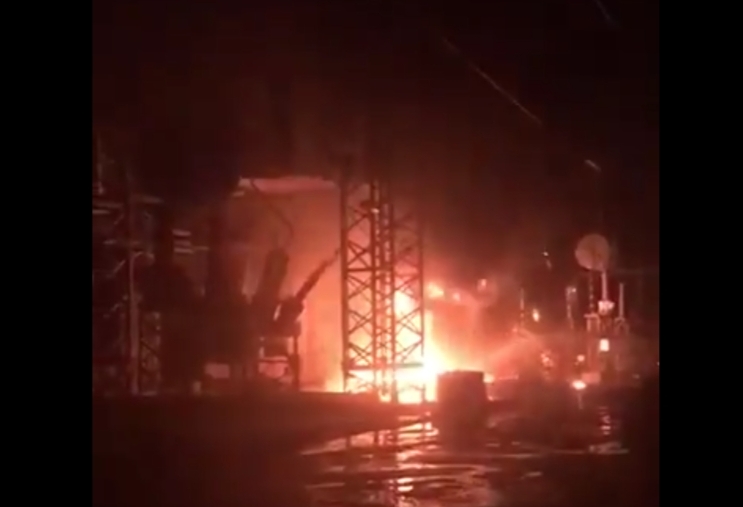Hurricane Maria, one of the most extreme climatic events of our time which devastated the island of Puerto Rico (PR), left tragic figures: thousands of people killed, property damage of more than 90 billion dollars of which many people are still struggling to recover, hundreds of animals (abandoned, lost and injured) still looking for a home, as well as the biggest state blackout in US history that for a large sector of the population lasted even for months.
Although light has returned for most Puerto Ricans, the hurricane and the destruction caused by its passage, revealed an electrical system that was on the verge of collapse and that nowadays requires an urgent investment in infrastructure. These investment and management decisions will define whether the system will survive, recover and be resilient in the long term.
Science PR , the Caribbean Division of the American Association for the Advancement of Science ( AAAS-CD ), and the Union of Concerned Scientists organized a symposium called ” Science in Action ” on the first weekend of September. “In which one of the questions explored revolved around what can we do to make the energy system emerge solid, resilient and healthy?
Lionel Orama of the National Institute of Energy and Sustainability Isleña ( INESI ) and Agustín Carbó Lugo of ClimaTHINK and former commissioner of the Energy Commission of PR ( CEPR ), in the panel where address this Question.

Panel on science, innovation and energy. From left to right: Lionel Orama, Agustín Carbó and Paula García
A critical moment for the electric sector
- The arrival of Maria was the straw that broke the camels back of an electrical sector that was already on the verge of collapse. The Electric Power Authority (PREPA) of Puerto Rico was already in an extreme fiscal crisis with a debt in bonds of $9 billion dollars. This contributed to PREPA making a precarious investment in infrastructure and limited maintenance of facilities and equipment. Upon arrival, the hurricane knocked down 80% of the power poles and all the transmission lines, leaving behind the 3.4 million inhabitants of the island in the dark.
- For years, PREPA has been a deaf adhere to the use of fossil fuels , subjecting Puerto Ricans to depend on the import of these fuels, the swings in their prices, and financial stress associated with the operation of their plants that work with oil, coal and natural gas . The lack of a diversified, decentralized energy matrix that does not depend on the importation of fossil fuels has only further delayed the recovery and reliability of the energy service provided by PREPA.
- The privatization of the PREPAonly contributes to generating more fiscal and operational uncertainty. At the beginning of this year, Governor Ricardo Roselló signed a law through which he will privatize PREPA. This privatization involves key questions as to who generates the electricity? From what sources? and at what price? To date there is total uncertainty about the answers to these questions and the impact they will have on the residents of the island.
- Likewise, the island lacked for years a control entity that would regulate the transparency and optimal functioning of PREPA until the CEPR was created in 2014. Despite its importance, its function is being threatened with the new law recently signed by Governor Roselló.
The transformation that Puerto Ricans deserve
- The voices of the scientific community and civil society must be reflected in the update of the Integrated Resources Plan (IRP). Your position at the table is fundamental so that the decisions that are made are informed by solid technical analyzes that respond to the needs of the communities. The Inesi is one of the organizations that are contributing to this task.
- A solid system must contemplate diversification and resilience. It is necessary to reduce the dependence on imports of fossil fuels, diversify the generation to local sources of energy (for example, solar and wind), update the distribution networks and integrate micro networks and energy storage systems to increase the reliability of the network and provide critical services (for example, for health centers, shelters and water pumping systems), as well as reduce energy consumption through energy efficiency programs. All this must be guided by principles of transparency and affordability .
- A healthy system must benefit us all. Greenhouse gas emissions (such as carbon dioxide and methane gas) from thermoelectric plants that run on fossil fuels (such as oil, coal and natural gas) will only make the effects of climate change such as intensification of Hurricanes, floods and droughts are increasingly devastating. Additionally, the burning of fossil fuels emits a number of air pollutants (such as carbon dioxide, nitrogen oxide and particulate matter) that are highly harmful to our health. It is vital that the transition to clean energy sources be made as quickly as possible.
Energy, climate and health. An equation that affects us all
Despite the fact that climate change affects us all, there are communities more vulnerable to the bad decisions that others have taken before them. Particularly in Puerto Rico, where these poor decisions made a showcase of the devastation it can cause in people’s health, social instability, the environment and the economy.

COMMENTS